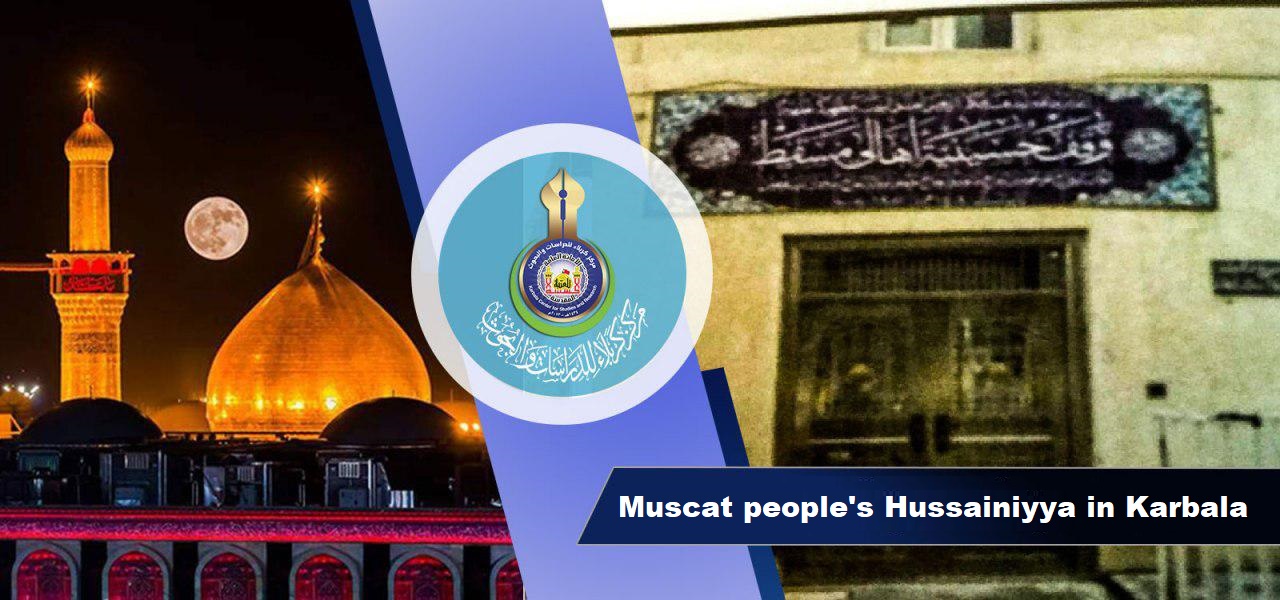It is a Hussainiyya established by the Twelver Shia of "Khoja" group from the Omani capital of Muscat. It was endowed by Haji Kadhim Eid on June 7, 1969 AD for the pilgrims of Imam Hussein "peace be upon him" who regularly came from Muscat to the holy Karbala.
It is appear from its endowment, that it was originally a house located in the property numbered (1/218) in the western Abbassia town, as the endowment administrator transfer its management by each of Haji Dawood Salman Al-Maskati, Hajj Jafar Salman Al-Maskati, and both of his sons Ahmed and Hassan, as well as Ahmed Haj Sultan and Mal Allah Ali Al-Maskati.
This Hussainiyya was included in the decision to demolition in 1973 to expand the street leading to the Holy Shrine of Imam Al-Hussein "peace be upon him". It was relocated to the property numbered (161/24 m 6) in Mukhayyam town, which has an area of (297, 90 square meters).
It was fully rebuilt and kept hosting prayers and Husseini mourning processions until 1991, when the Ba'athist regime seized it and demolished it to the ground following the public uprising back then. In 1994, the regime registered it as a property of the Ministry of endowments according to the resolution of the so-called "Revolutionary Command Council" No. 149, and in 1997, its ownership was transferred to the Ministry of Finance in accordance with resolution No. 148 issued by the same council.
After the fall of the Ba'athist regime in 2003, there was a quest to retrieve the Hussainiyya's property by a resolution of the local real-estate commission, as it once again rebuilt as a square-shaped building consists of two floors, each floor includes a number of rooms and facilities, while its gate was made of stainless steel, with a sign stated the name of Husayniyyat and the date of its establishment.
Source:
Mawsueat Karbala Al-Hadharia "Karbala Civilizational Encyclopedia", publication of Karbala Center for Studies and Research.
[Vol. 1, P. 99-100].

